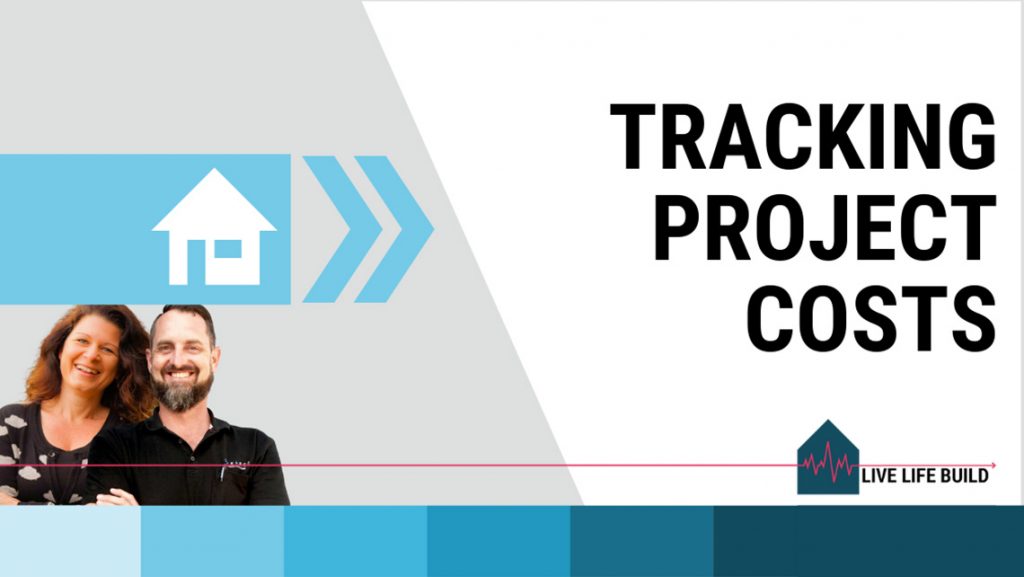Want to learn how to track project costs in your building business?
Stop guessing, and start really understanding how your projects (and business) are running.
We often hear from builders that they’re doing a good job of tracking their project costs. They feel they know how much time their projects take, and what their team needs to execute.
And yet, they’re still not running a sustainable business, and each proposal they do feels like a guess. They’re finding a figure that’s somewhere between the lowest they need to do the project for (so they have a chance of securing the job) and the maximum they can charge (so they hopefully make some money).
Tracking your project costs provides incredibly powerful data that will help you improve the accuracy of your future pricing, ensure you’re making money from your projects, and help you keep running your business.
However, if you’re not tracking project costs in a detailed way, you’re missing out on the amazing benefits of this powerful data.
Plus, if you’re not accounting for your own time – or your wife or partner’s – in the running of your building business, you’ll have a really hard time growing your business, and justifying the hire of admin support.
Because you’re really relying on free labour to make your business work, and won’t have any realistic idea of how much time that is actually taking.
In this blog post, Duayne explains how he tracks project costs in his building business.
And he also highlights what this has done for his business overall, including his accuracy with predicting future job prices, as well as his ability to grow his team, projects and business overall.
Read on …
5. WHY IT IS IMPORTANT TO TRACK PROJECT COSTS, AND HOW TO DO IT
So many builders spend hours putting together scopes of work and pricing for their projects and then just hope that the costs stay under what they have quoted.
They have no system or process for tracking the actual costs once the project proceeds.
As an example, for years in my business, I would always get so frustrated on every single project because Carpentry would always be over budget and eating into the project profit.
At first, I thought it was because the carpenters were too slow and not working hard enough on site. I would spend hours and hours working the carpentry labour out as if I was doing the job. But this was one of the problems.
You see, I was working all the carpentry on my jobs out based on when I was on the tools as a subcontract carpenter, which was fairly close for the carpentry. But what I wasn’t allowing for was all the miscellaneous tasks that carpenters end up doing on a building site.
This meant that a lot of the carpentry allowance was getting taken up by things such as:
- Keeping the site clean.
- Helping other trades.
- Moving materials around the site.
- Doing prep work for things like site set out/ footings/ slabs/ tilers etc.
- Unloading and loading trucks
I’m sure you get the idea. Carpenters are usually the most valuable people in any building business, as they tend to be the ones that do everything for everyone.
The problem is this: all this time to do these tasks needs to be accounted for.
Carpenters are expensive, so making sure you have an amount allocated to every single task (instead of just ‘Carpentry’) is very important.
Using Carpentry as an example, you need to develop a timekeeping system / time sheet that allows your carpenters to write down exactly what they are doing. This allows you to start understanding how much you need to allow for different tasks on future projects.
You’ll be very surprised how much time is spent on small things throughout an entire project.

4. IT’S DATA (AND IT CAN BE INCREDIBLY POWERFUL INFORMATION!)
These days data is one of the most valuable things in the world.
There are plenty of examples of people developing software or programs that have become billionaires, simply because the data they can accumulate within their businesses is so valuable to others.
So many people don’t realize how much data they actually have in their business because they don’t understand what data is. The word data means “known facts”. And Data especially refers to numbers.
The great thing about data is you already have it. You just need to know what to do with it.
Even if you haven’t been keeping good records, you can still get so much information from the data you already have. Once you see how valuable it is, it won’t take long for you to be making sure you are tracking everything. And doing it well.
In a building business, Data can help you predict growth, make educated decisions on the types of projects you take on, do they suit your team, see how the business is doing financially etc.
The most important information that data can provide, is to enable you to make sure you are pricing new projects accurately based on the data from previous projects.
You should be collecting data on all the on site costs, hours for how long things take to do, your business running costs, how long projects take to complete, how long the design process is etc.
There is so much Data you can track, and it will all help every single area of your business.
The biggest (and best) thing with Data is that it’s black and white, the numbers don’t lie. Collecting and understanding Data will change your business overnight.

3. CREATE CODES FOR YOUR JOBS SO YOU CAN ALLOCATE AND TRACK COSTS
For me, it’s all about keeping everything in my business as simple as possible and not making anything more complicated than it has to be.
And, for me, this also means limiting the steps involved, so everyone’s time is spent being productive.
Some businesses have very detailed processes for creating purchase orders and allocating costs to the accounting software they are using. These processes can be very time consuming and confusing for the trades, contractors and suppliers that may have to use them.
We keep this process very, very simple. In fact, it only requires my team to know 2 things.
The first 1 is the project number.
Every project we do has a reference number that is used right from the initial enquiry and then flows through to project proposal, contract, cost tracking, material orders etc.
The project number is simply made up from the site address, for example. If the project site address is – 10 Prince Parade Cashmere. Then the project number would be 010PPC. (We always make them 6 digits).
The second thing is that the labour, materials, orders etc always have the task listed.
For example, the team onsite lists the tasks they are doing on their timesheets. This means everything from – site setup, site set out, excavation, frame, soffits, installing windows, site cleans, moving materials around, helping another trade etc.
Then all materials and orders are allocated to the same list of tasks as well.
For example, if the team needs some 50mm x 38mm pine on site to do the site set out, then ‘SET OUT’ is what goes on the docket. If an order was placed to deliver this item to the site, then ‘SET OUT’ would go on the email or be told to the person taking the order.
You can see how simple this method is, from the above you would have-
- Carpenters Timesheet – 010PPC Site set out
- Hardware order – 010PPC Site set out
- Delivery docket – 010PPC Site set out
- Hardware invoice – 010PPC Site set out
So, using the above examples, these 2 things get listed on everything. Time sheets, dockets, invoices, purchase orders, proposals etc. Nothing gets put down to miscellaneous or entered in the wrong cost code in your accounting software.
You can make up as many tasks as you like. The more you break it up, the better and more accurate your cost tracking will be.
The most important thing is that your team, trades, contractors, suppliers always list the project number and task that you want them to.
Then, once everyone is doing this correctly you will save so much time in the office and know exactly what things are really costing.

2. TRACK HOURS SPENT ON EACH STAGE OF A PROJECT
For you to have a successful and profitable building business, you must know all your costs.
We’ve talked about how to track costs, why it’s so important, and how you can set up project numbers and allocate tasks.
But what about the hours that it’s taking your team to do the tasks on site? And, more importantly, how many hours you or your wife are spending in the office?
There are so many ways to track everyone’s hours, but the most important thing is finding something that works for you and that gives you enough information.
Your team on site should be breaking their hours up each day, so you can allocate them to exactly what you have allowed for.
If you are not doing this, how can you know that you are pricing the projects you are doing accurately? And to build up data for pricing future projects, you’ll want to be able to look back and see exactly how long a task has taken. If you’re just allocating all your carpenters time to carpentry on every project, you won’t have accurate data to help with future pricing (or an accurate understanding of where time has been spent in a project).
Instead, have your team break down their hours into areas such as: site set out, footings, framing, soffits, cladding, installing windows, installing a bath, supervising or whatever it is your own team does for you.
If you don’t do this, (and you’re anything like me), you will always be frustrated about how long things take.
And you will always be thinking that your carpenters are too slow, when the fact is they are doing a great job – you just haven’t allowed enough in your costs for them to do what they are doing.
Think your team won’t take the time to keep track of their hours when working for you?
It’s really important you educate your team about why it’s so important that they allocate their hours on site to the tasks that they are doing. Help them understand how it helps with running the business, pricing future projects, and keeping the business sustainable overall.
The most important hours to track are the ones that you, the builder, or your wife or partner are spending in the business.
This is one area that holds a lot of building businesses back, as 90% of the time, these roles are not getting covered, accounted for, or paid for. Remember you are running a business and deserve to make money for all the risks and liabilities you have as a building business.
Many builders we speak to aren’t making a profit and are trading insolvent – which is really scary.
This is because they aren’t charging for themselves, or their wife’s or partners’ time in the business. They simply just earn whatever is left after all the bills are paid, but the company itself doesn’t make money.
This is also the main reason so many builders struggle to grow their businesses, as they think they can’t afford to hire admin staff or maybe a supervisor.
And they’re usually right, because if they haven’t been tracking and costing in the work that they or their partner do for the business, then their business is currently relying on free labour to operate.
You need to be tracking all the hours that you the builder, your wife or your partner are spending in the business and allocate it to-
- if you are on the tools – allocate it to carpentry (and the task)
- if you are running between multiple sites – allocate it to supervision
- if you are in the office nights and weekends – allocate it to admin
- if your wife or partner works in the office – allocate these hours to admin
That fact is this: nobody gets into business to work for free. And yet, that’s what most builders and their wives / partners are often doing.

1. DO WEEKLY REVIEWS WHEN TRACKING YOUR PROJECT COSTS
Once you get your head around having data in your building business, it’s so powerful. But it doesn’t stop there, because once you have it, you need to use it to your advantage.
I love the numbers! As I’ve said before, “the numbers do not lie”.
And I like to review my data for different parts of the business every week.
By doing such regular reviews, I’m able to use the information to do things such as:
- Make educated decisions on the team, contractors, suppliers, finances, investments
- Change and adapt our projects so they can stay profitable
- Take advantage of special offers and buy in bulk when opportunities come up
- Advertise and grow our team as the business needs to
- Cut back on overheads if needed
- Predict workflow to spend on marketing if needed
- Check timesheets and invoices are correct with what’s happened on site in real time
- Submit accurate progress draws that reflect real costs
- Give clients accurate updates
These are just a few of the things I’m able to do by regularly reviewing the data we track, however you can see from the list just how powerful the information is once you have it.
Once you have real data put in front of you, especially on a regular basis, you won’t believe how much clearer things become.
You will get to a point where everything is so clear in your mind.
You will be less stressed as you can make educated decisions when needed.
You will sleep far better every night knowing your business is healthy.
And most of all, you will feel empowered because the guesswork is gone.

So, here’s our 5, 4, 3, 2, 1 to identify your ideal project.
5. Have you asked your team what their goals are?
4. How can you help and facilitate your team’s goals?
3. What are your goals as a team?
2. Holding people accountable.
1. Celebrate the wins and create a good work environment.
Live Life Build’s 6P Methodology unlocks the 6 ways to elevate your building business:
PERSONAL | PROJECTS | PEOPLE | PARTNERSHIPS | PROCESSES | PROFESSIONAL
Are you tracking your project costs? Become a data ninja and stop doing the guesswork!

